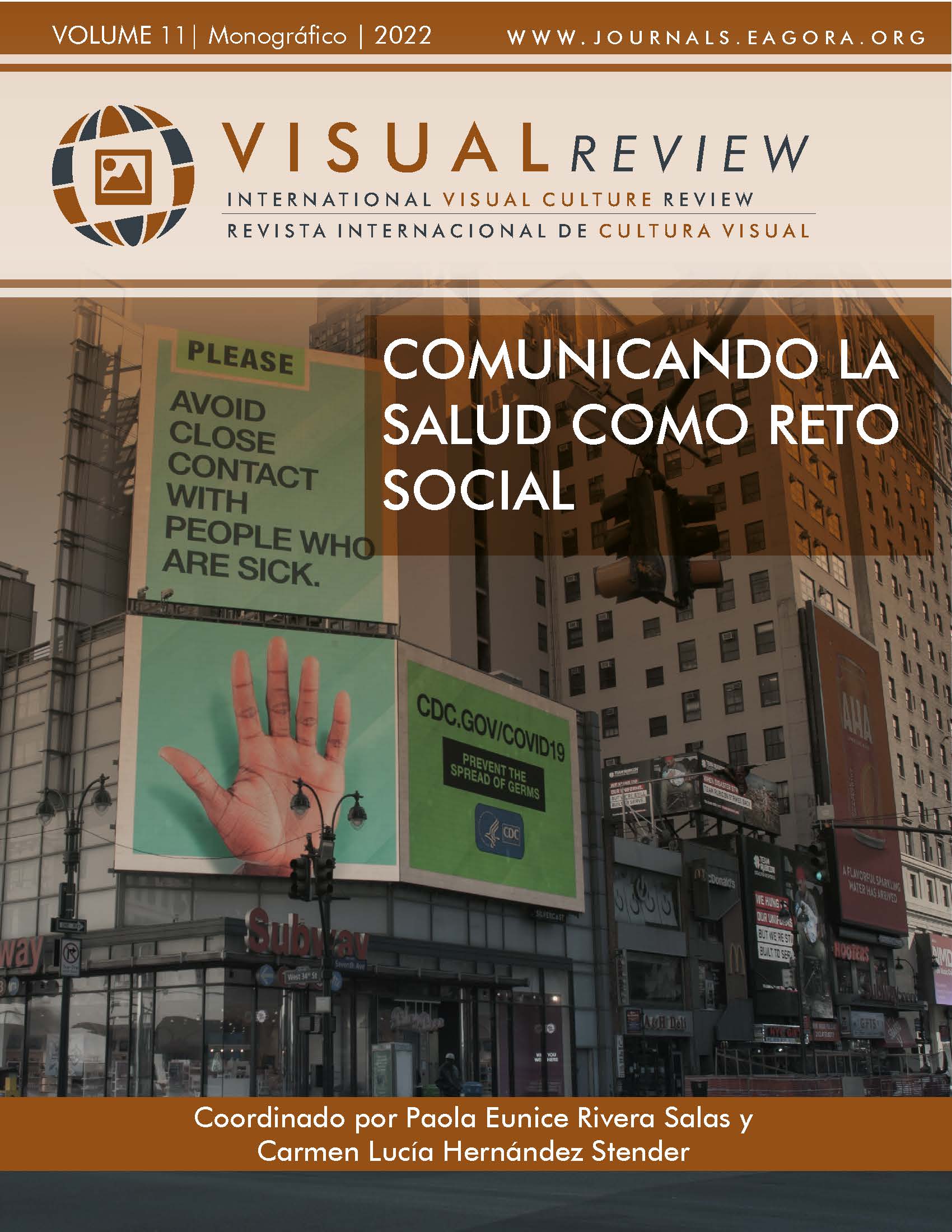Memory of the Covid Pandemic. Reflection from a Philosophical Anthropology
DOI:
https://doi.org/10.37467/revvisual.v9.4304Keywords:
Philosophical Anthropology, Death, Public Health, Collective Imagination, Private Spaces, Pandemic, Public OpinionAbstract
From an anthropological approach and a scholar framework of visual archaeology, this article tries to question -ask and answer- about the status, causes and effects that the "visual remains" of the lockdown of the Pandemic caused in the Spanish-speaking world and, particularly in Spain. The underlying question is whether these “visual remains” can be considered “spaces of resistance” -mostly collective-, or if, on the other hand, they have been framed within other interpretive frameworks, such as spaces of pain, spaces of hope, etc.
Downloads
Global Statistics ℹ️
|
425
Views
|
208
Downloads
|
|
633
Total
|
|
References
Ariès, P. (1999). El hombre ante la muerte. Ed.Taurus.
Ariès, P. (2000). Historia de la muerte en Occidente: desde la Edad Media hasta nuestros días. Ed. El Acantilado.
Arregui, J.V. (1992). El horror de morir. El valor de la muerte en la vida humana. Ed.Tibidabo.
Arregui, J.V. (2003). La actitud ante la muerte. En E., Anrubia, Cartografía cultural de la enfermedad. Ensayos desde las ciencias humanas y sociales. Universidad Católica de Murcia.
Bachelard, G. (1978). El agua y los sueños: ensayo sobre la imaginación de la materia. Fondo de Cultura Económica.
Bachelard, G. (1982). La poética de la ensoñación. Fondo de Cultura Económica.
Bachelard, G.(2000). La poética del espacio. Argentina: Fondo de Cultura Económica (1957. La poétique de l’espace. París: Presses Universitaires de France.)
Bauman, Z. (1998). La globalización. Consecuencias humanas. Fondo de Cultura Económica.
Bauman, Z. (2007). Tiempos líquidos. Vivir en época de incertidumbre. Tusquets Editores, Barcelona.
Beck, U. (1998). La globalización. Paidós.
Berger, J. (1980). Uses of Photography. About Looking. Bloomsbury. DOI: https://doi.org/10.3817/1280046209
Berger, J. (2000). Algunos pasos hacia una pequeña teoría de lo visible. Ed. Ádora Express.
Bollnow, O. F. (1969). Hombre y espacio. Ed. Labor.
Brandâo, E. (2021). Time to heal. http://www.emiliabrandao.com/es/portrait/time-to-heal/
Buck-Mors, S. (2005). Estudios visuales e imaginación global. En J.L. Brea. Estudios visuales (p. 159). Editorial Akal.
Buck-Mors, S. (2009). Estudios visuales e imaginación social. Revista Antípodan, 9, 19-46. DOI: https://doi.org/10.7440/antipoda9.2009.01
Buck-Mors, S. (1997). Aesthetics and Anaesthetics: Walter Benjamin”s Artwork Essay Reconsidered. En R. Krauss (ed,) October: The Second Decade 1986-1996, 62 (pp. 3-41). Cambridge, MIT press. DOI: https://doi.org/10.2307/778700
Fernández del Riesgo, M. (2007). Antropología de la muerte. Ed.Síntesis.
Jankélévitch, V. (2002). La muerte. Pre-Textos.
Kastenbaum, R. (2000). The Psychology of Death. Springer Publishing Company LLC.
Kubler-Ross, E. (1973). On Death and Dying. Routledge, Taylor & Francis. DOI: https://doi.org/10.4324/9780203010495
Kundera, M. (1980). Entrevistado por Philip Roth.
Lipovetsky, G. (2016). De la ligereza. (Vol. 501). Ed. Anagrama.
Meyer, J. E. (1983). Angustia y conciliación de la muerte en nuestro tiempo. Ed.Herder.
Morin, E. (1974). El hombre y la muerte. Ed.Kairós.
Nola, A. M.(2006). La negra señora. Antropología de la muerte y el luto. Ed.Belacqua.
Poch, C. y Herrero, O. (2003). La muerte y el duelo en el contexto educativo. Ed. Paidós.
Turkle, S. (2012). Alone Together: Why We Expect More from Technology and Less from Each Other. Basic Books.
Sánchez, M., Garrido, F. y Lozano, G. (2020). Casa de Muñecas Infinita: Una imagen poética de la Pandemia. HipoTesis Serie Numerada, 8, (pp. 7-26).
Sloterdijk, P. (2003). Esferas I: Burbujas. Editorial Siruela.
Weber, M. (1984). La acción social: ensayos metodológicos. Ed.Península.
Downloads
Published
How to Cite
Issue
Section
License
Those authors who publish in this journal accept the following terms:
-
Authors retain copyright.
-
Authors transfer to the journal the right of first publication. The journal also owns the publishing rights.
-
All published contents are governed by an Attribution-NoDerivatives 4.0 International License.
Access the informative version and legal text of the license. By virtue of this, third parties are allowed to use what is published as long as they mention the authorship of the work and the first publication in this journal. If you transform the material, you may not distribute the modified work. -
Authors may make other independent and additional contractual arrangements for non-exclusive distribution of the version of the article published in this journal (e.g., inclusion in an institutional repository or publication in a book) as long as they clearly indicate that the work was first published in this journal.
- Authors are allowed and recommended to publish their work on the Internet (for example on institutional and personal websites), following the publication of, and referencing the journal, as this could lead to constructive exchanges and a more extensive and quick circulation of published works (see The Effect of Open Access).













